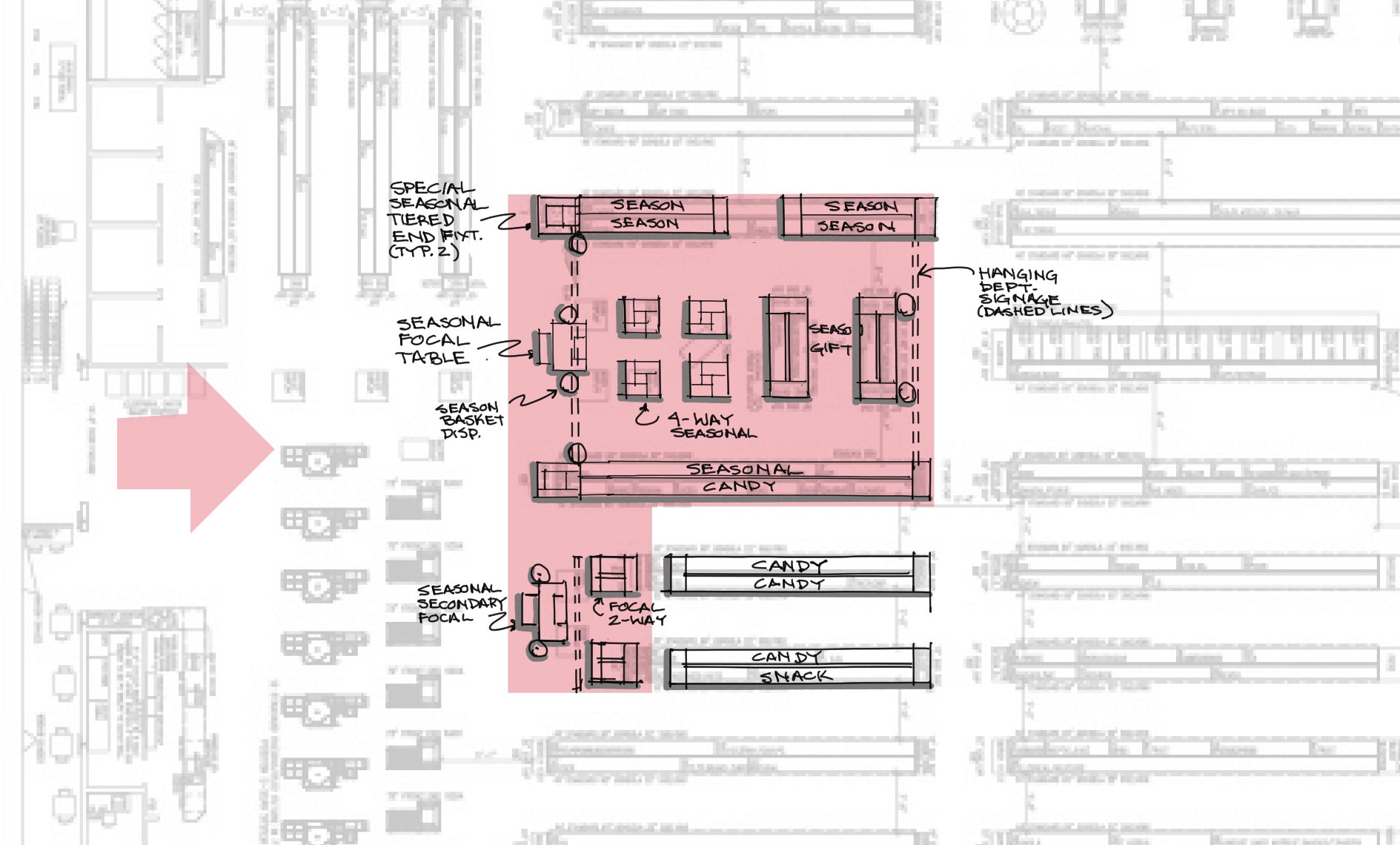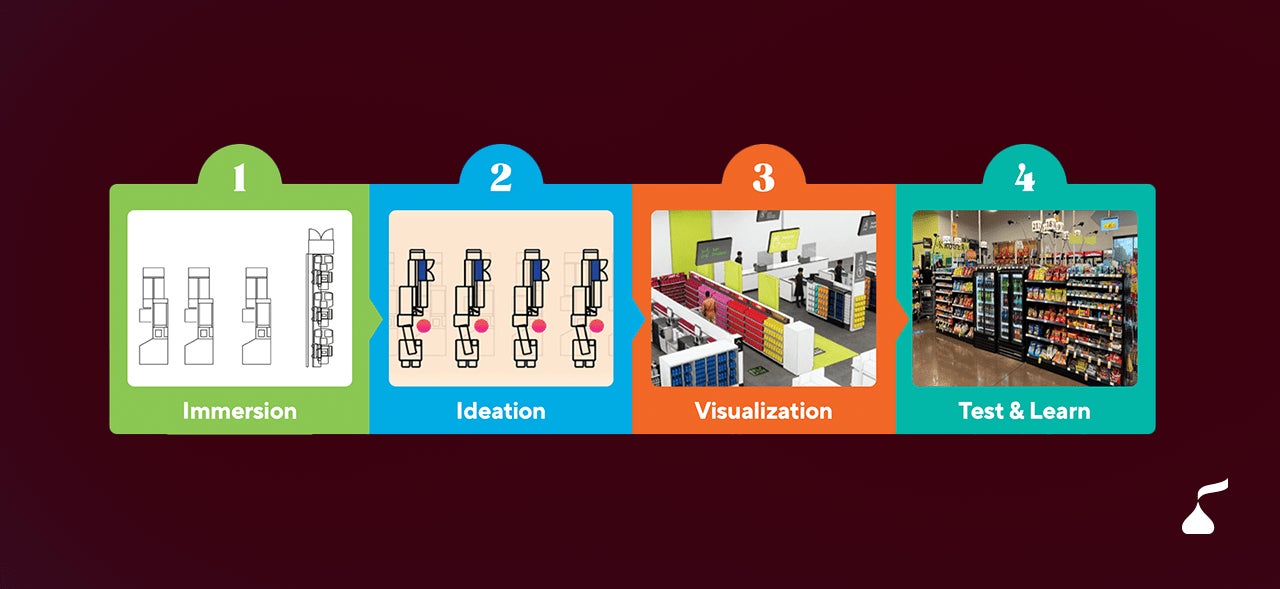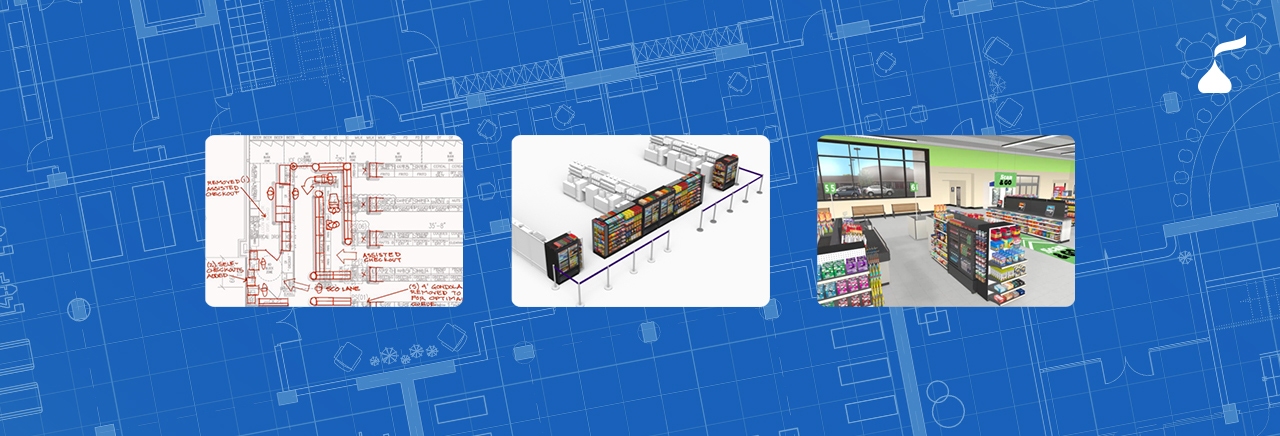August 30, 2023
When people ask me what I do for a living, my quick answer is I design stores. My more detailed answer is I create customer experiences that allow spaces and people to interact with brands. They’re always surprised when I tell them my employer is The Hershey Company.
People know Hershey as a candy and snack company that offers valuable insights, but the retail design line of service is still pretty new. The idea was born when our insights team uncovered data showing 40,000 remodels and new store openings on tap over the next five years.
As operators of Hershey’s Chocolate World, our company has been designing retail experiences for decades. The retail forecast unlocked an opportunity to partner at the store-planning level and facilitate the creation of unique, whimsical worlds that create buzz and excitement around candy and the store itself.
I came on board in 2022 to guide the design process, and it’s been a thrill to see this new direction come to life for Hershey. Last year, we tested designs in 25 stores, and we are collaborating with retailers on 300 designs in 2023.
Leading with insights
The conversation with retailers usually starts like this: I ask them what’s not working in their store and why. The more questions I ask, the more the onion peels, and we start to get the core of the issue so that I can share data-driven insights about human trends and shopper behavior (like our research on optimal queue design and create solutions).
 I’ll pull up a PDF of the retailer’s floor plan on my tablet, and as we brainstorm, I’ll sketch out some concepts that might work. Typically, I’ll create two or three versions we all feel good about, and then we’ll build three-dimensional digital models to walk through virtually. The blueprint we come up with might be for a self-checkout queue, or it could be designs that draw shoppers to the candy aisle or it might be an elaborate store-within-a-store candy shop that tells Hershey’s bean-to-bar story. Whatever the concept, it’s always unique to the retailer, and we embed their strategies into the design.
I’ll pull up a PDF of the retailer’s floor plan on my tablet, and as we brainstorm, I’ll sketch out some concepts that might work. Typically, I’ll create two or three versions we all feel good about, and then we’ll build three-dimensional digital models to walk through virtually. The blueprint we come up with might be for a self-checkout queue, or it could be designs that draw shoppers to the candy aisle or it might be an elaborate store-within-a-store candy shop that tells Hershey’s bean-to-bar story. Whatever the concept, it’s always unique to the retailer, and we embed their strategies into the design.

Early in these conversations, retailers often assume that Hershey does this work solely to help sell more Hershey products. I explain that Hershey wants to help them sell more of everything, including but not limited to Hershey items. By creating a better space, designing an experiential world and telling a good story, retailers see their sales increase across the entire category.
Recently, I had a conversation with a customer about his store’s challenges. I shared some possible solutions, and toward the end of the conversation, he said, “This is so refreshing because I don’t feel like I’m being sold to. I feel like you understand my problems, and you’re helping me solve them.” I almost cried when he said that because that is exactly what we’re here for. We want to help our customers make their shoppers’ lives easier and maybe a little more fun.
Human connections will always matter
I’ve been in retail design for about three decades, and I think about the future of stores a lot. For years we’ve been hearing the phrase “retail is dead.” I think the pandemic has shown us how wrong that phrase is. Retail is evolving, but physical stores aren’t going anywhere. They’re a place where consumers can learn about exciting new products, interact with their favorite brands and connect with other humans. To differentiate themselves, retailers must understand what their customers want and offer them experiences they love.
Candy is a great place to start. It’s a category that is naturally fun. It gets people excited. It tells stories and creates memories. And yet, that doesn’t always come through in the candy aisle. My team at Hershey is working to change that, and I’ve seen the payoff in the smiles that light up when kids and adults encounter our designs.
This work, to me, points to what the store of the future can be. It’s not a place where people come to pick up their necessities hurriedly. It’s a place they come for new products and experiences, personalized encounters and connection.
